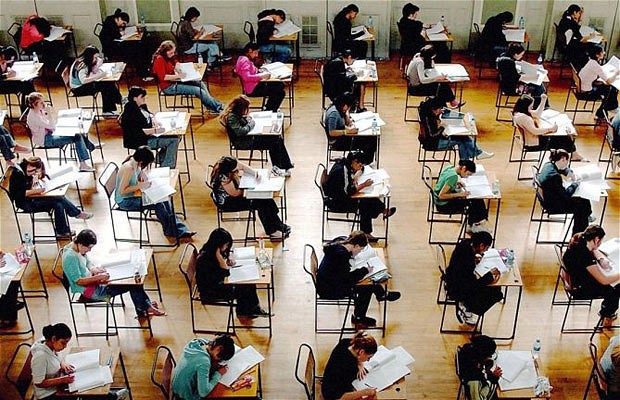With the BC Numeracy Standards
Assessment standards are changing with the new BC curricula, and it’s an exciting time to be coming into teaching. I’ve been exploring my assumptions and researching the new BC Performance Standards, and am impressed with the focus on formative over summative assessment. Summative still has it’s place, of course, and there will always be a role that traditional ‘tests’ will play in our assessment of students, however the new curricula lends itself to larger projects with higher level understandings of the concepts.
For example, the Grade 2 numeracy standards state that “Relatively short questions with a single correct procedure and answer are not appropriate for performance assessment.” (Grade 2 Numeracy p 52)
Another aspect I’ve found interesting is use of the term “Numeracy”. Just as Literacy is more than, yet still includes Reading, Numeracy is not limited to Mathematics. The concept of Numeracy is broken into the following concepts and skills:
These concepts are organized into four ‘big picture’ aspects of numeracy: Concepts and Applications
The standards will be used in our teaching practice by being embedded into the curriculum. We can link our learning outcomes to the standards, and can rephrase into kid friendly “I can” statements. The standards also provide concrete examples of student work of varying quality in order to assist teachers with application. Evaluation is ongoing throughout the term, and can include observations and communication between student and teacher. It also recognizes that some students will need support and be unable to work independently, but will still be able to grasp the concepts (for example, distractable students who cannot stay focused, but who still understand). The standards also allow for assessment to be adapted by the teacher as needed, to reflect the time of year, or differentiation needs of students. (BC Performance Standards Numeracy, P. 6)
By expanding assessment standards to reflect the big picture of Numeracy, the BC gov’t allows teachers more flexibility and application of ‘real world’ mathematics to their teaching. “Numeracy involves concrete applications in which students, confidently and independently, use mathematics to address real tasks or problems in an increasing variety of situations. The ability to recognize the mathematical demands and possibilities in a situation is an important aspect of numeracy. Numeracy is based on mathematical foundations and requires the application of concepts and skills related to the formal aspects of the discipline of mathematics. “ (BC Performance Standards Numeracy, P. 9)
It is important to remember that the standards are just one piece of the Evaluation whole. A combination of formative and summative assessments must be used to create a wholistic picture of a student’s learning. “The performance standards do not address all aspects of the mathematics curricula and need to be used in combination with other forms of assessment to develop a comprehensive picture of student achievement in the BC mathematics curricula.” (BC Performance Standards Numeracy, P. 10)
I look forward to learning more about Assessment strategies in class this semester!
For example, the Grade 2 numeracy standards state that “Relatively short questions with a single correct procedure and answer are not appropriate for performance assessment.” (Grade 2 Numeracy p 52)
Another aspect I’ve found interesting is use of the term “Numeracy”. Just as Literacy is more than, yet still includes Reading, Numeracy is not limited to Mathematics. The concept of Numeracy is broken into the following concepts and skills:
- “Number (Concepts and Operations)
- Patterns and Relations
- Shape and Space
- Statistics and Probability
- Problem Solving (Grades 8-12)
These concepts are organized into four ‘big picture’ aspects of numeracy: Concepts and Applications
- Strategies and Approaches
- Accuracy
- Representation and Communication” (BC Performance Standards Numeracy, P. 11”
The standards will be used in our teaching practice by being embedded into the curriculum. We can link our learning outcomes to the standards, and can rephrase into kid friendly “I can” statements. The standards also provide concrete examples of student work of varying quality in order to assist teachers with application. Evaluation is ongoing throughout the term, and can include observations and communication between student and teacher. It also recognizes that some students will need support and be unable to work independently, but will still be able to grasp the concepts (for example, distractable students who cannot stay focused, but who still understand). The standards also allow for assessment to be adapted by the teacher as needed, to reflect the time of year, or differentiation needs of students. (BC Performance Standards Numeracy, P. 6)
By expanding assessment standards to reflect the big picture of Numeracy, the BC gov’t allows teachers more flexibility and application of ‘real world’ mathematics to their teaching. “Numeracy involves concrete applications in which students, confidently and independently, use mathematics to address real tasks or problems in an increasing variety of situations. The ability to recognize the mathematical demands and possibilities in a situation is an important aspect of numeracy. Numeracy is based on mathematical foundations and requires the application of concepts and skills related to the formal aspects of the discipline of mathematics. “ (BC Performance Standards Numeracy, P. 9)
It is important to remember that the standards are just one piece of the Evaluation whole. A combination of formative and summative assessments must be used to create a wholistic picture of a student’s learning. “The performance standards do not address all aspects of the mathematics curricula and need to be used in combination with other forms of assessment to develop a comprehensive picture of student achievement in the BC mathematics curricula.” (BC Performance Standards Numeracy, P. 10)
I look forward to learning more about Assessment strategies in class this semester!

 RSS Feed
RSS Feed
